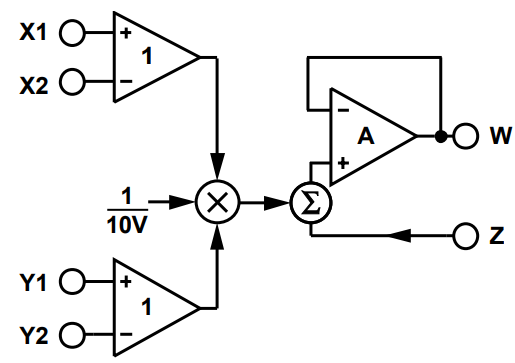Sounds like an application for analog multipliers: For example, the AD633

You could need two, plus a 3.0V reference voltage. If you need the exact transfer function you state, you'd also have to multiply the result by 3.33 (so an op-amp and a couple resistors).
So you'd feed Vc into X2, 3.0V into X1, 0V into Y2, V1 into Y1, 0V into Z on the first.
Output from W is (3-Vc)*V1/10
Then on the second
Vc into X1, 0V into X2, 0V into Y2, V2 into Y1, W (from the first one) into Z and take the output from W.
Output from W is \$V_{W2} = (0.1)(V_CV_2 + (3-V_C)V_1)\$
Then a simple non-inverting amplifier with two resistors to bring the output up to the desired level.
The downsides are these parts are rather expensive, and they are not terribly accurate. You could consider doing it digitally, which is quite practical at audio frequencies with a 32-bit micro.
Or with a digital pot that can handle bipolar signals, connect one side to each of the inputs and feed it a digital control signal that results from converting the 0-1V input to 0..xx where xx is the maximum setting of the digital pot. Eg. AD5121
Also, for actual audio applications, OTAs such as LM13700 are used, but don't expect much in the way of DC accuracy or stability.

